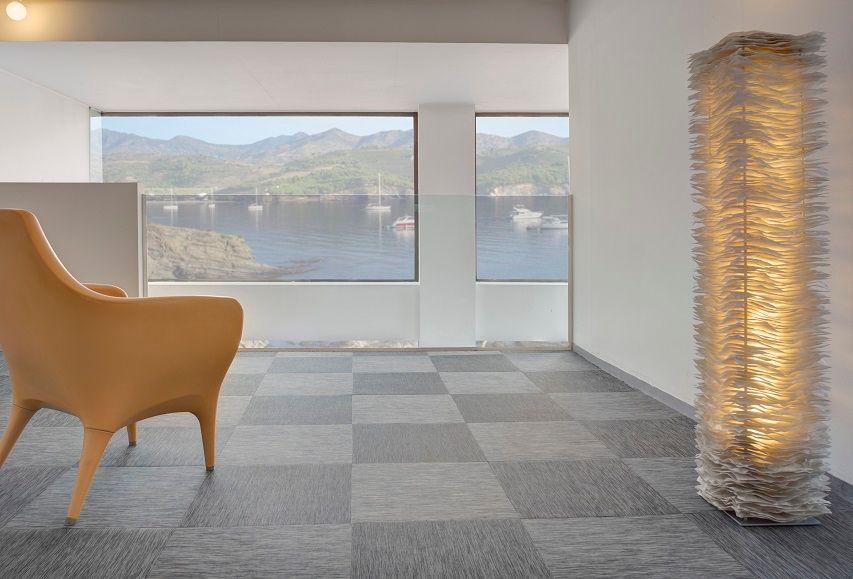Do you know the amazing Eixample district in Barcelona? That’s what inspired Fitnice designers to work on their original floors. The result is a striking woven vinyl that combines Spanish temperament and design with very good workmanship.

Fitnice Woven Vinyl Flooring
History of Barcelona’s Eixample district
The Eixample district can be described as a phenomenon on a global scale. It was built from scratch in the second half of the 19th and early 20th centuries. During this period, Barcelona grew rapidly, accompanied by a large increase in population. The city began to struggle with a lack of space. In the years 1854-56 the city authorities decided to pull down the walls around the oldest part of Barcelona and held a competition to design a modern residential district in this place. Its originator was Ildefons Cerdà, but other modernist architects, including Antonio Gaudi, also contributed a lot to its appearance. What makes the Eixample unique? It was realized on the basis of extremely precisely defined geometrical principles. Streets intersect at right angles, creating quadrilateral quarters for residential buildings (Spanish: manzanas). The width of streets was to be 20 meters and the height of buildings should not exceed 16 meters. The district consists of a system of squares with sides of 133.3 meters. The buildings are separated from each other and their height does not exceed the width of the streets between the buildings. This allows the sun’s rays to reach every spot in the district. Why do the Fitnice designers have such a fascination with Eixampla? When we look at the Barcelona district from a bird’s eye view, the analogies to Fitnice’s braided flooring are obvious. The floor of the Spanish brand maps the outline of the city with its complicated, but extremely systematic structure.

The Eixamle district in Barcelona
The layout of the district has become a symbolic inspiration for the Fitnice product, which emphasizes its Spanish pedigree. It’s worth taking a closer look at Fitnice floors, because in addition to their interesting history, they stand out for their aesthetic and functional qualities.

Fitnice Woven Vinyl Flooring
Functional design
Fitnice products are exceptionally elegant braided floors, based on vinyl reinforcement and additionally stiffened with constructional mesh. The current offer of the Fitnice brand includes dozens of types of floors divided into four collections: Opera Prima, Wicker, Panama and Chroma. Individual patterns differ from each other in colors and type of weave. This finish is suitable for both homes and apartments, as well as public buildings exposed to very intensive use. Fitnice braided floors are very often used in offices, shopping malls, hotels, restaurants and even SPA salons.
Woven vinyl is an environment where bacteria do not develop. The fact that we are dealing with an environmentally friendly and safe product for users is evidenced by the FloorScore label, which designates finishing materials that meet LEED, CHPS and Green Guide for Health Care quality criteria. Fitnice floors are manufactured in Spain, so the brand owners have full control over the quality of their products. The fabric is resistant to weather conditions, including UV radiation, moisture or temperature changes. It can also be used outdoors. The finish is so durable that the manufacturer offers a 10-year warranty on it, even when used in areas of heavy use. In the context of using Fitnice floors in public facilities, it is extremely important that they are fire resistant. A big advantage of Fitnice vinyl floors is that they provide very good room sound insulation. Therefore, they can be successfully used in office spaces, children’s rooms or even recording studios.
Fitnice woven vinyl flooring are very practical both in laying and daily cleaning. The customer can choose between a 200 cm wide product in a roll or standalone panels of 50 cm x 50 cm. Installation is very quick and requires no specialist skills. The floor is cared for using water and traditional floor cleaners. Even the most difficult stains such as wine, juice, ketchup or markers can be easily removed from the surface.
























